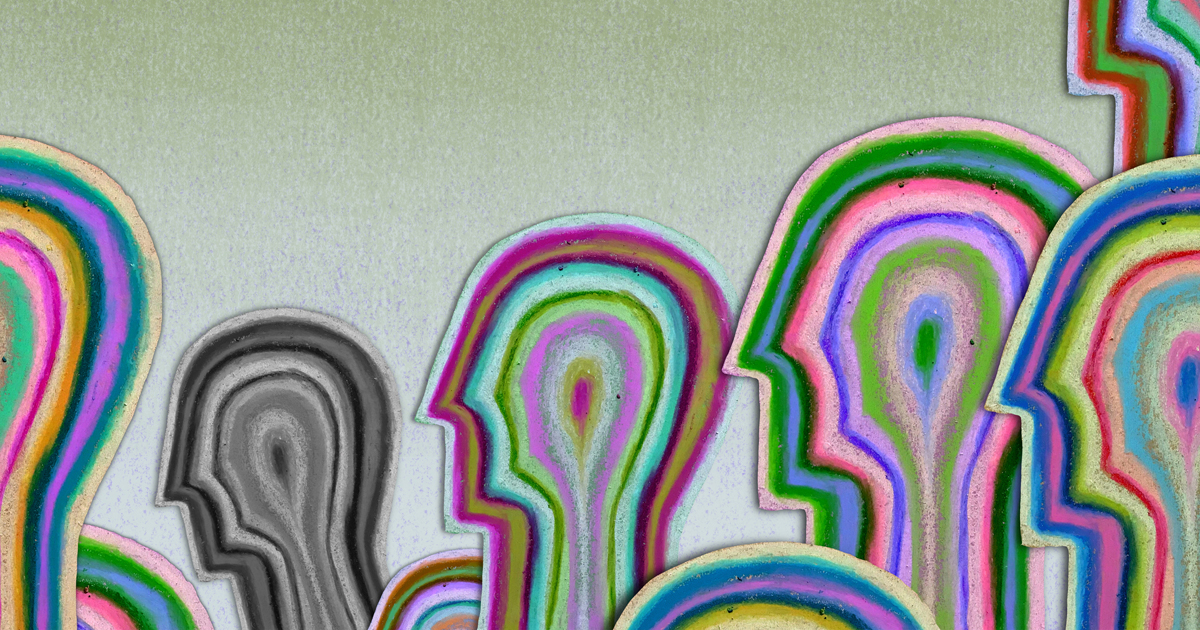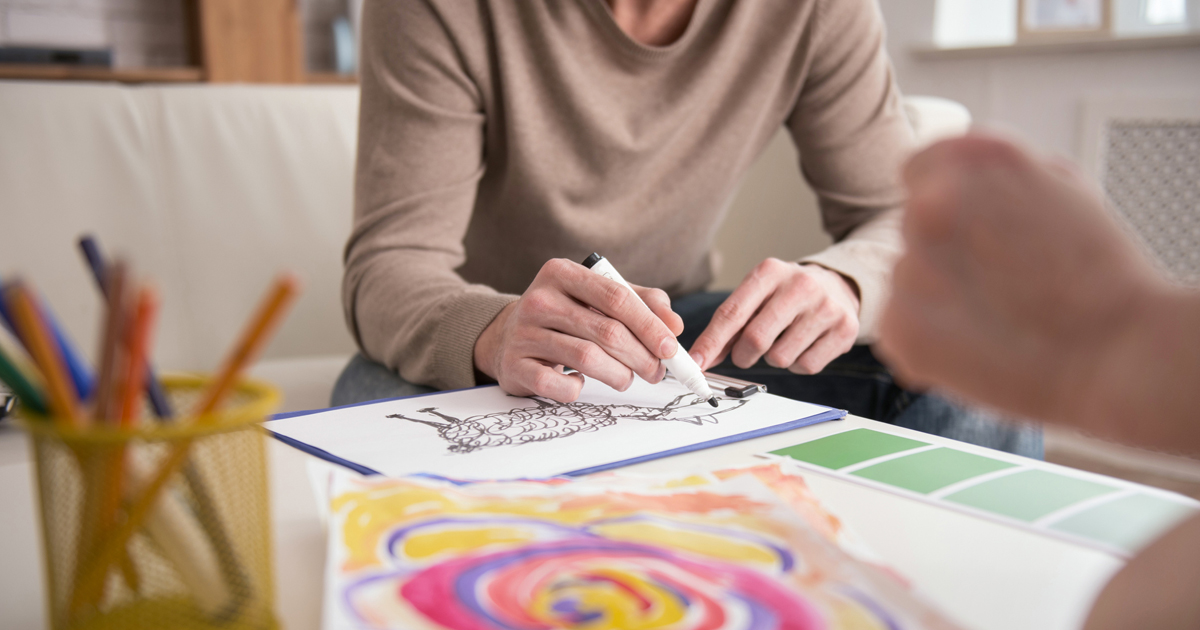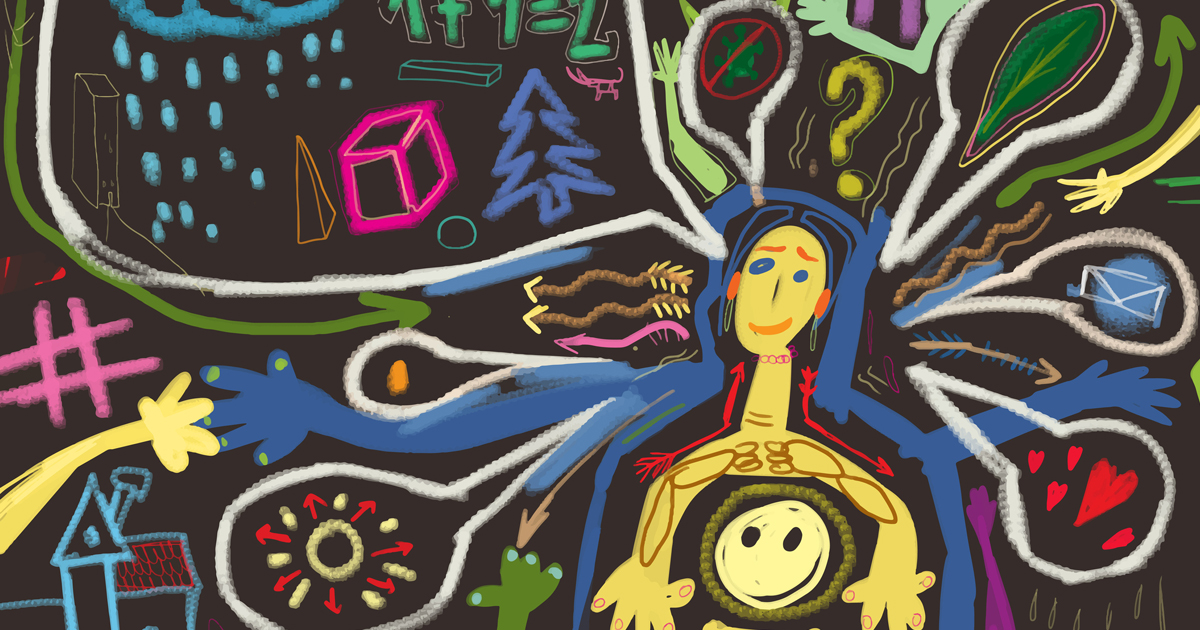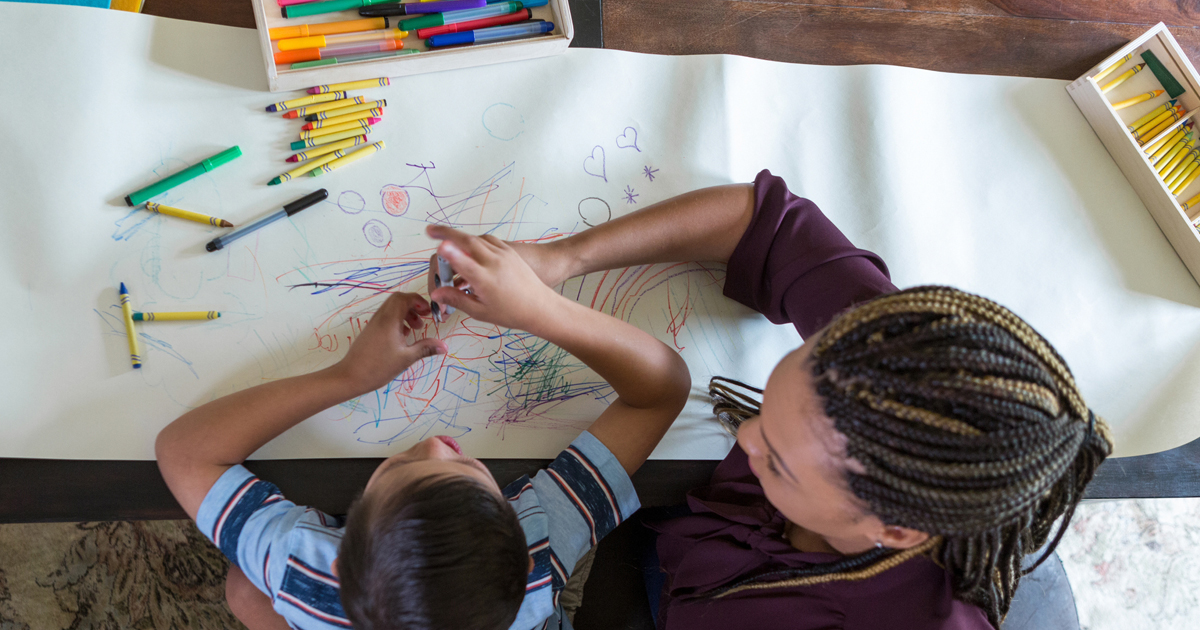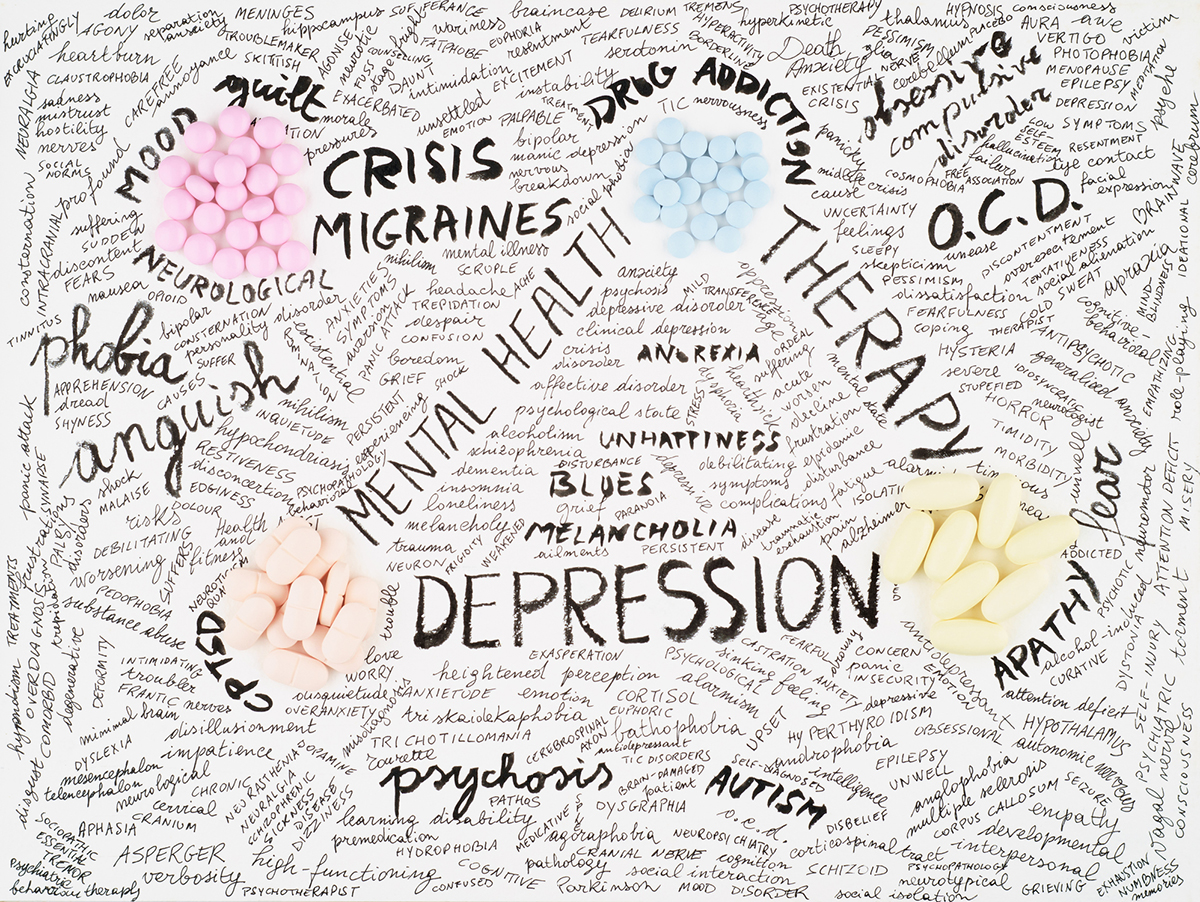Sometimes, when a person is in recovery from a substance use disorder, living with anxiety or depression, or working to heal from trauma, words aren’t enough. Often, there are emotions felt that are strong and pervasive yet seem to remain out of reach for a person trying to verbalize them. This may happen because there is such a mixture of feelings that they can’t be separated into specific, rigid categories. Furthermore, people are usually able to feel a range of different emotions at the same time. For example, there can be moments of happiness, even when someone is feeling very depressed. There can be moments of peace, even while someone still feels overwhelmingly anxious.
Feelings can often defy words. This is one of the shortcomings of talk therapy. How does one discuss emotional states with a therapist when they can’t even sort out the emotions in their head? Fortunately, there is a growing form of treatment backed by scientific evidence that can express these emotions and get out feelings that might otherwise be trapped in a person’s head. This expressive treatment is called art therapy.
What Is Art Therapy and Its Importance?
When someone thinks of art therapy, the thought might invoke images of scribbling on a piece of paper or, for the more artistically inclined, drawing objects or landscapes. It is true that this can be a part of art therapy, but there is so much more to it. In reality, art therapy encompasses all forms of art media and can be used in the treatment process of people hurting from any form of mental illness to help restore body and spirit. This can be used at any point in one’s treatment, and at any age.
According to the American Art Therapy Association, art therapy integrates mental health therapies with human services to help bolster people’s experiences through art, creativity, applied psychological therapy, and human experience. More simply, art therapy can be an individual treatment or used with more than one person in a group together, and science suggests that it can reshape our brain and alter our thoughts in a more positive, balanced way.
What entails is that art therapy is much more expansive than just drawing. In fact, there are no set rules to what defines art therapy, but the overarching theme is that it will express creativity. Poetry, singing, dancing, knitting, doodling, painting, and (for the more mathematically inclined) expressing emotions through numbers or solving equations.
What art therapy is not is something that has strict rules. When someone was young, they may have been told that coloring within the lines was a sign of growth, that maturity meant structure. Unfortunately, this was often bad advice, and not only limited the creative side of the brain but may have worked to turn people off to the creative process. Art therapy works to undo this thinking and open up all sorts of possibilities. It is not uncommon for someone who is scared of, or thinks that they are really bad at art, to realize its healing power once the right materials are given to them for expression.
Art therapy is important because it helps recovery. Unfortunately, many people in the general public think art therapy is a secondary form of therapy, or something that is done without any real substantial gains behind it. It is fortunate that professionals know better, and that art therapy is far from a secondary form of healing but, instead, something that is a main source of treatment.
Art Therapy is a Scientifically Recognized Form of Therapy
Art therapy is not facilitated by just anyone. It is overseen by professionals who have been trained in or specialize in this type of therapy. There are real psychological benefits to it and that is why so many trained, scientifically-aligned people are embracing it. It has been shown to involve pathways in the brain that are part of sensory functions and motor skills. Specific parts of the brain involved in major functions of the body are improved by this type of therapy. It has also been shown to improve self-esteem, build confidence, and promote change in ways of thinking, all to improve one’s well-being, and it can continue to aid in not only the recovery of people with substance use disorders but also provide skills that can help them face the world, and be utilized through the rest of their lives.
An art therapist is a master-level professional clinician who guides people through the healing process. There is thorough training for people providing this sort of therapy, and therapists adhere to the highest ethical standards.
Scientific studies suggest that creative expression through art therapy can help people dealing with anxiety, depression, and even more serious diseases like cancer. It can help with improving memory in people of all ages, from the young to the elderly, who may especially need help in this area.
Art therapy is so intriguing because it can promote a reflection in an individual that might otherwise be too painful to face, or help to shape the very feelings that someone in therapy didn’t even know they had bottled up inside them. It can promote resilience emotionally and may reduce the effects of trauma that weighs a person down. It can possibly ease the withdrawal of someone in recovery from a substance abuse disorder. It may help someone put the strong emotions from the treatment of PTSD into the creative process.
What are the Benefits of Art Therapy?
Art therapy can be so beneficial to someone in need of restoring balance in mind and body because it can help them understand what is going on with their mental state and look deeper into their thoughts and actions. It can work to bring a person into the here and now, forcing them to face the present moment even when escaping sounds like a more palatable solution. Honestly, digging deep into one’s mind can be hard (and sometimes painful). Art therapy may help people put into context the feelings afflicting parts of their brain that are otherwise hard to access. People often hold their feelings in and keep them so guarded that it’s hard to sort everything out. However, unprocessed emotions still hurt us, and finding a way to get them out through expression can help us cope with such feelings.
One of the foremost benefits of art therapy is that it can help people learn to heal. This healing may happen in many steps, although there is no set order or way to experience these benefits, and everyone’s journey is unique. This therapy can help someone regulate their emotions, and they can take these skills with them for the rest of their lives.
How to Begin Art Therapy
One thing treatment professionals hear all the time from someone being introduced to art therapy is the claim that they are “bad at art”. The truth is, there are no rules for art and no one place for you to start, so there is no such thing as being “bad” at it. Your professional therapist will provide you the materials you need to start your expressions, and they can then help guide you as necessary with suggestions and encouragement. Therapy may start with something as simple as drawing a circle on a piece of paper. A person often finds that they can take it from there and the emotions and expressions start flowing.
Materials such as paint brushes, yarn, glitter, or anything else can be used in the expression. Music can be incorporated. Beautiful things come from art therapy, no matter what one starts with. Talent has nothing to do with it, and people find they are drawn to things they never knew they would be drawn to.
Where Does Art Therapy Take Place?
Art therapy takes place in any setting where people are in need of mental healing. Art therapists are trained to work across all cultures. It can reflect the values and spiritual beliefs of any individual.
Some of the places you may find art therapy being utilized include:
- Neuroscience Centers
- Facilities For People Recovering from Substance Abuse Disorders
- Psychiatric Centers
- Community Centers
- Senior Centers
- Primary, Elementary, and Secondary Schools
- Colleges and Universities
- Centers Specializing in Healing from PTSD
- Facilities Specializing in Depression and Anxiety Disorders
- Hospitals
- Homeless Shelters
- Private Therapy Offices
- Women’s Centers
- Group Homes
- Art Studios
Who is Right for Art Therapy?
Art therapy is beneficial to people of all ages. That said, common groups include:
Children
Children are especially drawn to the artistic process. Something about the human experience can be defined by art, and children use this creative process uninhibited by self-doubt. Using creative expression to convey emotion is not only beneficial to the patient because they can express themselves in ways they may not be mature enough to express in words, but it also helps the therapist to see in new ways what the child is feeling, thus aiding in their treatment. In other words, a child can often tell a therapist things through their art that they may have no other way of expressing.
Teenagers
Art therapy is beneficial to teenagers because, by this age, they have likely learned to be guarded with their emotions. As we get older, we realize that expressing ourselves through words can be very painful, and sometimes teenagers have the inclination to close these emotions off instead of reflecting on them and letting them out. Teenager’s brains are still developing, and this may mean they are more prone to the benefits of art therapy, such as stress relief or recovering from trauma.
Adults
Many people who experience art therapy for the first time are surprised at the way it opens them up to new forms of treatment. Art therapy, as we have mentioned above, may actually physically change the brain into a more positive manner open to healing. Creation and art have been with humans for as long as we have been around, as demonstrated by cave paintings from thousands of years ago. There is a reason that art has stuck with us through the millennia, and it certainly helped humans survive through all that time because of the many psychological benefits.
Unfortunately, adults are the population most likely to dismiss art therapy. They may even think of it as juvenile or silly. However, anyone who has tried art therapy will likely tell you that none of that is true.
Seniors
Art therapy may also help elderly patients ward off cognitive decline. Licensed medical professionals utilize this technique, often to great success. Parts of the brain that deal with memory are affected by art therapy in very positive ways, and studies on the link between art and memory are ongoing to this day.
How Long Does Art Therapy Take to Be Effective?
There is no set time for art therapy to be effective. It does, however, provide a means to express oneself creatively that can benefit that individual throughout their lifetime. There is some evidence that suggests that benefits may really start to begin after about 8 weeks, although various clinicians believe that any amount can have benefits and have never found this therapy to have negative effects. The best part for a patient to explore the effectiveness of art therapy is to simply give it a try with a licensed professional.
Art Therapy and Healing
Art Therapy is just one of the many types of therapy we utilize at Sage Neuroscience to help one through their healing process. Whether you are a person recovering from a substance abuse disorder, are seeking treatment for depression or anxiety, or are working through your past trauma, Sage Neuroscience uses treatments that facilitate your recovery through creative expression.
If you are seeking treatment, please do not hesitate to contact Sage Neuroscience. We believe in treating your unique mental and physical health needs with the goal of helping you find balance in your body, mind and soul.
